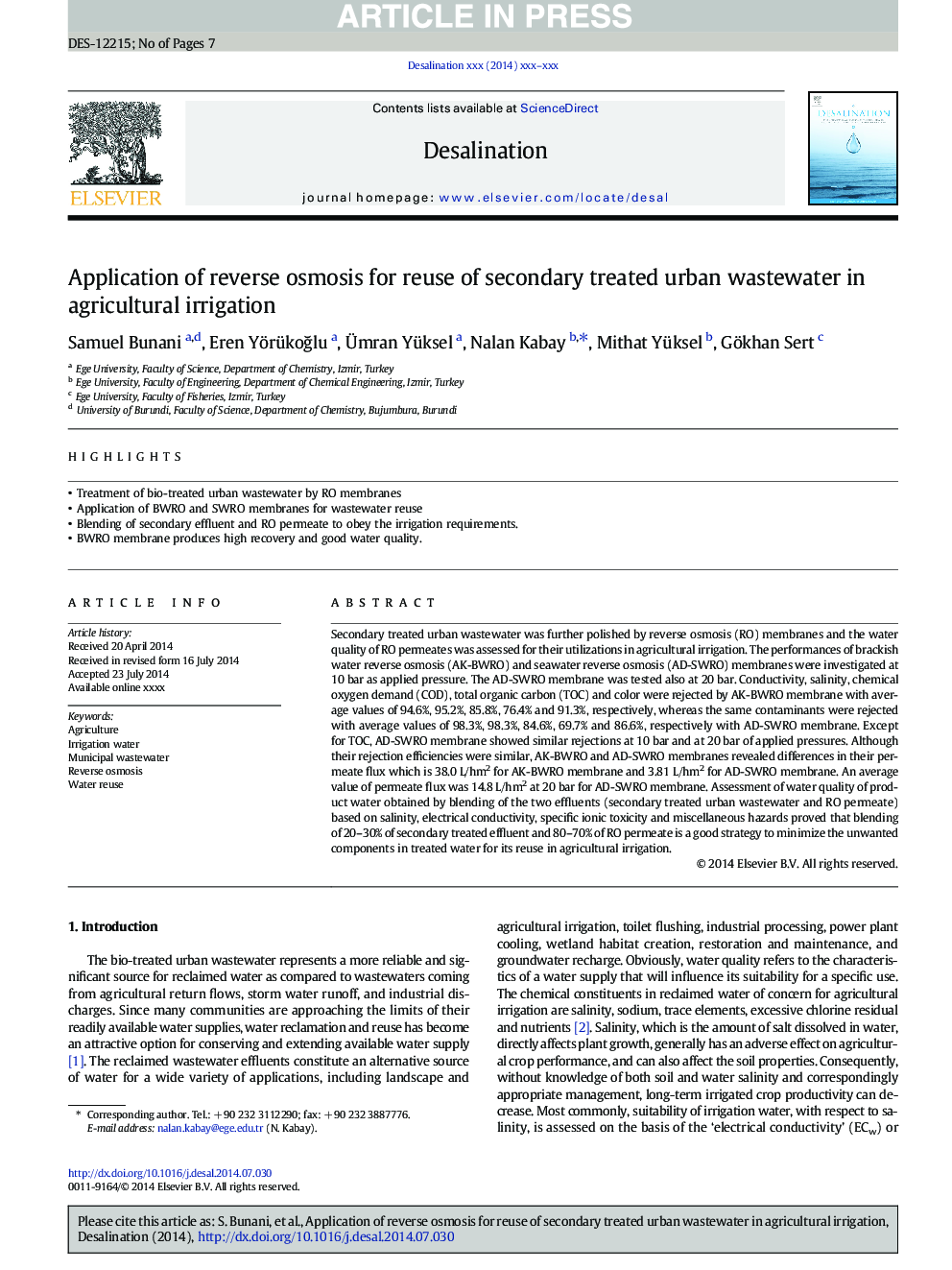| Article ID | Journal | Published Year | Pages | File Type |
|---|---|---|---|---|
| 623136 | Desalination | 2015 | 7 Pages |
Abstract
Secondary treated urban wastewater was further polished by reverse osmosis (RO) membranes and the water quality of RO permeates was assessed for their utilizations in agricultural irrigation. The performances of brackish water reverse osmosis (AK-BWRO) and seawater reverse osmosis (AD-SWRO) membranes were investigated at 10Â bar as applied pressure. The AD-SWRO membrane was tested also at 20Â bar. Conductivity, salinity, chemical oxygen demand (COD), total organic carbon (TOC) and color were rejected by AK-BWRO membrane with average values of 94.6%, 95.2%, 85.8%, 76.4% and 91.3%, respectively, whereas the same contaminants were rejected with average values of 98.3%, 98.3%, 84.6%, 69.7% and 86.6%, respectively with AD-SWRO membrane. Except for TOC, AD-SWRO membrane showed similar rejections at 10Â bar and at 20Â bar of applied pressures. Although their rejection efficiencies were similar, AK-BWRO and AD-SWRO membranes revealed differences in their permeate flux which is 38.0Â L/hm2 for AK-BWRO membrane and 3.81Â L/hm2 for AD-SWRO membrane. An average value of permeate flux was 14.8Â L/hm2 at 20Â bar for AD-SWRO membrane. Assessment of water quality of product water obtained by blending of the two effluents (secondary treated urban wastewater and RO permeate) based on salinity, electrical conductivity, specific ionic toxicity and miscellaneous hazards proved that blending of 20-30% of secondary treated effluent and 80-70% of RO permeate is a good strategy to minimize the unwanted components in treated water for its reuse in agricultural irrigation.
Related Topics
Physical Sciences and Engineering
Chemical Engineering
Filtration and Separation
Authors
Samuel Bunani, Eren YörükoÄlu, Ãmran Yüksel, Nalan Kabay, Mithat Yüksel, Gökhan Sert,
